#and while it may not be explicitly about larry ...
Explore tagged Tumblr posts
Text
12Jul24
Three hundred and fifty-six days Since last we saw Harry on stage, But tonight a duet! For Ms. Nicks’ Hyde Park set, And a Songbird who’s now flown away.
#larry#harry#harry styles#stevie nicks#bst hyde park#the sun tipped us off that harry would join stevie nicks on stage during her bst hyde park set in london tonight#the fandom was a frenzy waiting to see if it would actually happen#things were pretty well confirmed when the usual suspects started to appear#spotted on the vip platform: rob stringer; kid harpoon and wife jenny; chloe burcham and gemma; tommy bruce#shit got real when we got a photo of harry side stage#jeff was seen with him#(worth noting here that irving managed fleetwood mac at some point)#there were reports that lloyd was there and that pham was taking photos on stage#the presence of the harry parliament made it feel HS4-y#but harry seems to have been there simply to support stevie for an emotional performance#it was christine mcvie's birthday#she passed away in 2022#harry paid tribute to her with a custom ss daley hand-embroidered songbird pin on his ss daley suit#the embroidery is green and blue#the songbird pattern is inspired by an 1800s lithograph and an accompanying scarf shows four different birds#and while it may not be explicitly about larry ...#i can envision harry's smirk when asked which of the four birds he wanted stitched on the jacket#they sang stop draggin' my heart around and landslide#there was also a super cute moment when harry slipped a 'it's coming home' into the mic#not unlike his husband recently#and harry is rocking the beginnings of a skullet mullet#which i'd like to see him fully commit to#limerick-hs#july 12#2024
139 notes
·
View notes
Text
i may be literally the last person to ever notice this, but having just actually watched a bootleg of the full dear evan hansen musical, i realized something.
connor never sings.
oh sure, there's sincerely me and disappear.
connor never sings though, because connor is already dead when those songs happen.
there are two versions of connor in deh, and this is especially clear if you watch clips of the different versions back to back. it's clearest leading up to and during disappear, when fake connor (as i'll be calling him for the duration of this post) appears in evan's bedroom for the first time.
at this point, we've seen sincerely me, but that's not fake connor's real entrance. see, the way it's staged, if you're not familiar with it, is evan and jared on one side of the stage, hunched over a laptop, and connor on the other side, lit by a single spotlight. that light comes on as jared and evan are writing, but it switches off every time they stop. because this is not fake connor, fake connor who is an expression of evan's guilt, part of his brain to argue with.
sincerely me connor is just a puppet. a mouthpiece. in the short sincerely me reprise, at the end, jared literally pushes connor back into the wings like he's another prop on wheels. because that's what connor is in sincerely me, a prop!
in disappear, though, he's a bit more than that. fake connor isn't a puppet, he's just the other part of evan's brain, as he argues with himself over what he's doing.
fake connor tells evan that no one deserves to be forgotten, "if you can somehow keep them thinking of me" but by this point in the show, real connor is already distant, being overwritten by his fabricated counterpart.
in the language of musicals, characters speak until the emotions are too high, then they sing, then they dance. that's the escalation.
deh is an eight man production, and only seven of those characters get songs.
heidi and cynthia duet anybody have a map (the only place on the soundtrack that real connor features, with his spoken lines "i already said i'd go tomorrow" "perfect, so i won't go! thanks mom") and heidi also gets good for you and so big/so small. zoe gets requiem and only us. jared and alana both feature heavily in good for you, and jared's there in sincerely me. larry gets to break in a glove. evan headlines, obviously, waving through a window, for forever, etc.
everyone gets to express their emotions in the language of musicals, gets to sing to the audience about how they feel, evan all but sobbing on stage during words fail, zoe's refusal of fake grief in requiem, alana and jared's betrayal in good for you.
everyone but connor. connor, who always speaks, always walks. doesn't communicate the way everyone else does.
connor, who spent his life not being listened to, lashing out, surrounded by people who could not or refused to give him the support he actually fucking needed.
connor is defined by everyone but himself for the entire musical. "you're such a freak!" "don't mind my brother, he's a psychopath" is robbed of his voice entirely in sincerely me, when evan and jared switch him on and off as they bicker about the contents of the emails.
"no one deserves to be forgotten" fake connor sings, while real connor is already a fading memory.
real connor's feelings are impenetrable to us as the audience, he never turns to us the way everyone else does. We know as much about what was going on in his head as the other characters do, which isn't true for any other character! even the songs that are explicitly conversations instead of soliloquies, song reveals in a way speech does not, that is the rule of musicals.
and real connor never sings. never gets to reveal himself. we do not get a chance to truly know real connor, before fake connor has already replaced him.
#deh#dear evan hansen#connor murphy#meta#ramblings#i have way more thoughts about real connor vs fake connor btw those are coming soon#i just wanted this post to stay on the topic of the fact that REAL CONNOR NEVER SINGS#this realization has Destroyed me so now i must inflict it on you#I REALLY HOPE THIS IS COHERENT IT'S 2 AM BUT I NEED TO SHARE THESE THOUGHTS NOW
18 notes
·
View notes
Text
The online Buffy fandom seems to really like talking about the "original plans" for the show, but also to hate the concept of citing sources or providing evidence. So there are all sorts of ideas from the "original plan" floating out there in the aether that you seem to have to choose whether or not you believe based largely on vibes.
Generally I'm inclined to be pretty skeptical of the concept of an "original plan" for the show, whether that's the idea that Dawn was "originally" going to have telekinetic powers or that Faith was "originally" going to kill herself in the middle of Season 3 or that Buffy's parents were "originally" never going to be appear on screen. It is very hard for me to square ideas like these with the general tone or theme of their respective seasons. (If they're true, I think my main takeaway would be that we're fantastically lucky that the show turned out as well as it did.)
Similarly, but somewhat distinctly, I'm very dubious of readings which suggest that, for example, Amy's actions in Season 2's Bewitched, Bothered & Bewlidered are a sign that Amy's characterisation in the first half of Season 6 was actually planned out well in advance. I don't think that interpretations like this are really supported by the text of the show at all, and frankly I don't think they give the writers enough credit for the very real skill involved in making things up as they went along.
For the most part, and barring evidence to the contrary, I'm inclined to put most of the "original plans" people like to talk about down to misunderstandings or miscommunications. Maybe an idea got idly tossed around for a few minutes while a season of the show was first being brainstormed, or maybe an actor initially only signed up to appear in five episodes, and from those tiny true fragments an "original plan" for the character was retroactively inferred which was never intended by the show's creators.
But there are a small handful of exceptions to this general rule -- the idea that it was "originally" Xander who was going to come out as gay, not Willow; the idea that "originally" Angelus was going to kill Oz rather than Jenny Calendar; the idea that "originally" Kendra was going to survive Season 2 and go on to have Faith's Season 3 arc -- that I think are different. I haven't been able to find hard sources for these claims either, but they've all been repeated for so long, and for so often, with so little variation, that I think it's more likely than not that the writers have at some point described these as the original plans for the show. These, I'm reasonably sure, aren't misunderstandings on fandom's part.
Let's call them what they are instead: lies.
The show's writers may well have claimed these, but if they did I don't think there's any reason to believe they were telling the truth.
Yes, it's very easy to read Xander as a (deeply, deeply repressed) gay or bisexual man. It's the most sympathetic way to make sense of his awkwardness around Larry Blaisdel, and of his frequently expressed opinion that Angel and Riley and Spike and Oz (and all the other men his two best friends date) are attractive and of his jokes about wanting to date them. And if you believe that Buffy herself is bi -- as I do, but (perhaps crucially) the writers explicitly don't -- then it makes a certain amount of sense that her metaphorical Heart should be as well.
But nothing about the way the show actually treated gay men over its seven seasons suggests to me that the writers would ever have seriously considered having one of the leading male chararacters come out as attracted to men. The actual show gives us Larry (who boasts to Xander about how out he is without ever actually showing romantic or sexual attraction to another man on screen, then is quietly killed off and seemingly never mourned), and Andrew Wells (whose obvious but unacknowledged attraction to both Warren and then later Xander is always played as a 'hilarious' joke) and Jane Espenson tried to smuggle Giles/Ethan past the other writers for an episode or two but ... that's really it, isn't it? (Not counting things unique to Angel the series, anyway.) We didn't even get the (supposedly) originally scripted kiss between two men in Smashed, allegedly because the writing team that brought us Bewitched, Bothered & Bewildered were worried about there being "unfortunate implications" to having sexual attraction be something that magic could influence.
Equally, yes, it really sucks that Jenny Calendar died and it's nice to imagine that the writers at least considered keeping her alive and trying to do something interesting with the character. But I'm pretty sure that the writing was on the wall for her as soon as the show retconned her as being linked to Angel's curse (if not well before).
Why would Angel kill Oz, specifically? What links these two characters? Why not go after somebody Buffy has actually had a conversation with first? Or somebody that Angel ever had a conversation with? When you know the show's full history -- when you know what happens to not just Jenny herself but also Gwendolyn Post and Maggie Walsh and Joyce Summers, to Cordelia and Tara and Anya, to every adult woman with any impact on the plot and to any woman who dares to break up with one of the Core Four -- how plausible does it really sound that the writers ever considered sparing Jenny at the expense of Oz?
And yes, it also stinks that Kendra only got to appear in three (or, let's be honest, something more like one and a half) episodes before she was killed off. And that her name is only spoken once after Becoming, and only as a bit of exposition to set up the new, more plot significant, more interestingly written vampire slayer. It's infuriating to realize that of the six Slayers we see called before Chosen it's exactly and only the two white Slayers who get to live and have full character arcs. It would have been great if Kendra could somehow have stuck around, or if the writers had found a pretense to bring her back somehow.
But the fragments we see of Kendra's personality -- painfully shy around boys, a stickler for following the rules, raised from a young age to respect the authority of her Watcher -- suggests she's utterly unlike Faith. How could she have had Faith's Season 3 arc, without her character being totally rewritten from the ground up? How could she have this arc and still be Kendra?
Yes, Kendra should be important. She's the second Slayer we ever meet, somebody who's very existence upends everything we know about the show's mythology. The first -- and for a while, only -- person we meet who can really understand Buffy and appreciate exactly what she's going through as a Slayer. Kendra should be one of the major characters on the show, and her untimely death should have long term ripples and ramifications for years to come. But equally it seems very obvious that the writers didn't care about her at all, and that they never did and were never going to.
So she isn't a major character, and her death doesn't matter.
I think it's doing the show more credit than it deserves -- and willfully downplaying its very real and persistent homophobia and misogyny and racism -- to pretend that any of these things could have been different. Even if it does turn out that the writers ever claimed otherwise.
53 notes
·
View notes
Text
information.

public & private information your muse might know or not know about mine, depending on certain circumstances, situations, verse(s) and etc.
public information.
information that almost anyone can learn or know about larry; this is either through larry himself, research, or the media, or other forms of basic intel mediums.
at the tip-top of public information, larry is a high-ranking pokémon league member in paldea. he's the gym leader of medali, with a normal-type specialisation; he's also an elite-four member, though his specialisation is frequently extrapolated / assumed to be the same as his gym.
his personality and demeanour are quite notoriously flat and emotionless. many league members, not just in paldea but abroad, are known to be more bubbly than your average joe in many media distributions. while this is mostly likely a social and business-related façade, it's one that larry does not conform to.
larry doesn't engage the media as often as other league members. he prefers a quieter living, though some people might perceive this as weird or even suspicious.
semi-public information.
information that would take more digging to procure; it's not explicitly public, but relatively borderline.
larry has been spotted on dates with men. this has been detailed in less mainstream, more gossip-prone news outlets. larry hasn't made any explicitly public statements about his sexual orientation, but these articles narrow his sexual orientation (at the very least) as away from heterosexual.
larry is a dual-type specialist. he specialises in both normal-types and flying-types. the latter is not explicitly advertised, as it is intended to be something of a surprise if someone hasn't done their research.
he's been subject to targeted online jokes and memes. mostly of a relatively derogatory nature. even though his league slogan is " the exceptional everyman, " it's well known that he's visually and verbally lacklustre in the emotion department. the biggest joke(s) oft twist exceptional to unexceptional.
larry is a semi-heavy smoker. this is mostly known to medali residents, as they may spot him outside wherever he's working, smoking. or, more occasionally, someone may spot him on his apartment balcony with a stiff drink in one hand and a cigarette in the other.
despite his branding as a businessman, larry has no tertiary educational qualifications. he doesn't have any doctorates or masters or undergraduate degrees, which some people find odd, given his high-ranking and business-likened nature.
private information.
information about larry that someone is highly unlikely to know unless they are close or otherwise intimate with him. even those close to him may not know all these segments.
larry is a transgender man. he isn't adverse to letting people know, it's simply that he passes and is even presumed to be cis in majority of perspectives. he doesn't think that the public necessarily deserves to know every inch of information about him.
larry is gay. expanding from the bit of information in the semi-public section: he's not made any public statements about his sexual orientation, but those close to him (mostly) know. again, not adverse to letting people know, but he isn't exactly the most social butterfree-type of individual.
he's a high-functioning alcoholic. he hides his alcohol abuse, and often disguises his drinking as social. he has dependency on drinking in order to get through the day without lapsing into bad depressive symptoms.
larry has changed his legal name twice. he first changed in his name as soon as he turned eighteen, thereby gaining legal authority over his address. however, after experiencing severe, recurrent mental health episodes, he felt he needed a fresh start. most people would've known him as someone very mentally unwell, given how outward his symptomology was, and this tainted his chosen name for him. after he left his hometown of los platos, on his twenty-eighth birthday, he changed his legal name a second time to larry.
when larry was younger, he was loud, abrasive, and part of multiple youth gangs. under a different name both colloquially and legally, larry was an archetype rebellious youth. he'd been warned several times for acts of aggression and petty crime, but had never been lawfully reprimanded during this time. he was known for his love of poison and dark-types, as well as being a general troublemaker in class and in the community. he didn't graduate secondary education; he dropped out part way through highschool.
larry has been diagnosed with schizophrenia, and later in his life, depression. doctors presume the schizophrenia to be of genetic, or sometimes referred to as organic, causes. his first significant episode of psychosis was when he was eighteen, almost nineteen, and continued to experience severe episodes until he was twenty-five. now his episodes are more moderate, and he usually admits himself to a private psychiatrist when he feels himself feeling unsafe. he is on a very high dose of first generation antipsychotics, which certainly haven't helped his rigid body and flat affect.
because of one of his mental health episodes, larry was arrested, and sustained multiple police-related injuries. during an incident where he went cold off his medication, he succumbed to a relapse into an incredibly severe episode of mental illness. he proceeded to threaten multiple people with a kitchen knife midst a main street in los platos. police arrived shortly on the scene, and he received various injuries by both police and police pokémon alike when he didn't back down and started to advance on the police crew. because of his known diagnosis, he was eventually sent to a mental health ward rather than rotting in a jail cell. he still has scars around his left wrist and right shoulder from when two growlithe jumped him to get the knife out of his hand.
he has bad reactions to any sort of weed debris or smoke. it makes his psychotic symptoms flare up regardless of the heavy dose he's on, so if he catches even a whiff of it, he'll seek to leave whatever location he's in.
#hc.#i'll probably add to this overtime but for now here u go!!!#long post //#drug ment //#ask to tag //#man looking at this i'm like. larry do u talk abt anything ever#FDKLMGFLKMDF he really doesn't have a lot known about him he's a quite quiet individual in terms of media distribution
8 notes
·
View notes
Text
136: Emmylou Harris // Wrecking Ball

Wrecking Ball Emmylou Harris 1995, Elektra
What side were you on in the Lanois Wars? No matter whether it was Sucks or Good, we all lost. All I see is an endless grey expanse of stormclouds thundering with muffled floor toms, ground heaped with murky guitar tones and broken aviators, waves of reverb washing against a tastefully emptied shore. Probably the worst thing anyone can really say about Lanois’ serenely wreathed production on the series of career reclamation projects he helmed in the ‘90s (Dylan, Nelson, the Neville Brothers etc.) is that it’s all a bit mannered, that it doesn’t fully trust these icons to impress on their own steam anymore. There are plenty more sphincterous rings of producer hell than that in my estimation; those albums all did what they set out to, and sound pretty great. At his best, “Eno’s pet romantic” (as Robert Christgau once called him) brought the most stirring grand gestures of New Age/ambient to rock, creating music that felt like glimpsing heaven on a rainy day.
(God that paragraph was stupid. I should’ve cut that whole bit right? Moving on.)
These days Lanois produces infrequently—by the 2000s he'd become an artisan who specialized in a single expensive, antiquated handicraft, dealing to a small clientele of legacy artists looking to tastefully evoke their own previous triumphs (e.g. U2) or to tastefully evoke the previous triumphs of someone else (e.g. The Killers). In 1995 though, when he worked with Emmylou Harris on this comeback album, he was at the height of his reputation as an elder-whisperer, and the narrative around the album all but said he had to dig Harris out of her grave and shoot her with the Re-Animator serum to give her career back to her. (Never mind that Harris was just 48 years old and both looked and sounded as great as she ever had.)
youtube
Wrecking Ball was certainly a radical change in her presentation to this point in her career. Out went the Nashville session guys, in exchange for heavyweights from her new producer’s rolodex (notably Larry Mullen, Jr., Brian Blade, Daryl Johnson, fellow Canadian Malcolm Burn, and Lanois himself on guitar). Moody, Anton Corbijn-esque portraits replaced the teased-up hayloft glam photography of her last few releases. Back in the ‘90s and early ‘00s the cliché answer to someone asking what kind of music you like was, “Oh, everything except country and rap.” Like Johnny Cash’s American Recordings series, Wrecking Ball was about retouching Harris’ star persona to allow more rock fans to relax their biases and enjoy her for what she’d been all along.
Harris may be my favourite country singer. While she’s capable of a powerful holler, her greatest gift is her softest, the way she allows her voice to become so breathy it trembles in and out of hearing—on the ballads her vocal lines are like landscapes naturally hollowed out by the wind. Even when she was a teenager, she wielded her staggering voice as though it were an instrument of glass, so still and introspective compared to the Tammy Wynettes and Tanya Tuckers who dominated the genre in the ‘70s. These qualities only came into sharper focus as she aged—listen to her parched whispers on Neil Young’s “Wrecking Ball,” the way she gathers strength as she builds to the cosmic chorus of “Waltz Across Texas Tonight” (a rare co-writing credit, with Rodney Crowell).
Despite her many successes as a solo artist, she’s if anything better known as a peerless backing vocalist, willing to give herself over to help others accomplish their own visions. The stuff that most explicitly resembles Lanois’ solo work (e.g. “Deeper Well,” “Blackhawk”) is perfectly fine, but seems better suited to like a Robbie Robertson solo album than one of Emmylou’s. The record is better when it plays to its star’s established strengths—not because she’s incapable of doing different things, but because it’d been too long a time since those strengths were treated as delicately as they are here. Again, as with American Recordings, I don’t believe Wrecking Ball is its artist’s ‘definitive’ work. But it is a very satisfying repackaging that bought her an entrée to a non-country audience that otherwise might’ve taken much longer to embrace her, and an enduring record on its own merits.
youtube
136/365
#emmylou harris#daniel lanois#country#'90s music#'90s country#running off at the mouth#music review#vinyl record
2 notes
·
View notes
Note
Why is Chappell Roan so significant to you?
I never saw you talking about 'what it means to be Harry Styles in the time of Lil Nas X, Troye Sivan or Sam Smith.' All highly successful gay artists who have been out for years, since the start of their careers.
The phrase came from the ask anon. I certainly would have written about the time of Lil Nas X if I'd got an ask about it in 2019. Although what I said would have been quite different.
But I do think that at the moment it looks like Chappell Roan is doing something that has rarely been done before (and if she does it over a sustained period of time then she will be doing something that has not been done before). She's an out queer music performing queer songs to mainstream audience that want to see her live in large numbers.
I think there are a couple of questions about what she's doing - obviously festival crowds (while significant) will not necessarily become ticket buying crowds. It seems like she has a significant straight audience, but that's just vibes. It could be that so many more young people are identifying as queer that you can have an audience that is both mainstream festival goer and mostly queer. By mainstream here - I'm not exactly using it as a euphemism for straight. I'm using it to mean, not exclusively and explicitly queer and also very large.
This is different from the artists you name. The story of Lil Nas X is complicated, because he was outted. But by Montero - he was making openly queer songs that had a mainstream audience. But he has not become a big touring act.
Troye Sivan makes queer music for queer audiences, and that's true of both his songs and his tours. I think he's incredibly relevant to Harry's career. Troye Sivan decided that he was going to come out before he signed a record label, so that he never had to chose with whatever options the record label would offer him. There has never been a time of Troye Sivan because of that.
Sam Smith started being an artist who drew large mainstream/straight crowds - particularly older female crowds - and largely played music that had an existing straight audience (even if there may be queerness in the lyrics - I don't know enough about Sam Smith to know). The crooning, suit wearing version of Sam Smith was following a path that already existed, even if it was notable that they came out as gay at the beginning of their careers and then came out as genderqueer. More recently I think they've moved away from that and been much more explicit about queerness. My impression that they've been successful with songs, but that there's been tension between what people who will pay money to come see them want, and what they provide. (I'd be interested in hearing from anyone who has followed Sam Smith from the beginning. I only began to pay attention to pop music after I listened to a podcast about 'Larry Stylinson' and went to see what that was about).
This is all very relevant to Harry, who is a touring artist. Queer artists making queer music touring to large crowds - creates options or questions (probably both) for Harry in a way that no amount of single success would.
#More than anything else#I think it's important to tease out that difference#I almost want to call them attention and event based music careers#and there has been more space for queer artists making queer music reaching the lartest audiences in attention based parts of the industry#than event based ones
0 notes
Text
WEB STARTUPS CONDENSE IN SILICON VALLEY
And that's fine. So if you can think of several heuristics for generating ideas for startups: what do people who inherit money, and you need to know the type of every argument in every call in the program. In cold places that margin gets trimmed off. There were no guards patrolling the perimeter of the village. Not explicitly, of course. We'll see. There are esoteric areas of business that only flourishes in certain places that specialize in it—that Silicon Valley specializes in startups in the hope of investing more later, what happens if they don't? It's terrifying to build something big from scratch.1 At this stage the company is their performance. And when people seem to continue to exist, is earn money.
For example, so competition ensured the average journalist was fairly good. People have always been willing to do something people want. Our employer-employee relationship. What should you do? They think of the profiler as an add-on, at best. Raising a traditional series A round you have to do well at that. There is no manufacturing to confuse the issue. Gradually you realize that these two things are as tightly connected as only a market can make them. Even more important than brevity to a hacker: being able to work with someone to know whether you want to discover things that have been overlooked till now, only a handful people got to see: what happens in the first half of the class-project syndrome.
So if you're not certain, you should get summer jobs at places you'd like to work. My Y Combinator co-founder? Instead of telling you what to do. Startups succeed by creating wealth, which is doing so well they could probably be acquired in about ten minutes if they wanted.2 Bill Gates, Steve Jobs, Larry Ellison, Michael Dell, Jeff Bezos, Gordon Moore.3 Maybe things will be different a year from now, if the upside looks good enough. And perhaps most important, obviously, is when what you have to introduce yourself, or someone else, that you are already working as hard as you possibly can. When technology makes something dramatically cheaper, standardization always follows.
YC. Next time, I won't. But what does that really mean? In a technology startup, which most startups are, the less pressure they feel to act smart. The reason these conventions are more dangerous is that they know what they're avoiding. If there is some limit on the number who can work for salary at 1000-person companies. Maxim magazine publishes an annual volume of photographs, containing a mix of pin-ups and grisly accidents. No cofounder Not having a cofounder is a real problem and 2 intensity. Even genuinely smart people start to act this way there, so you have to decide who the founders should include technical people. Two of the false positives were newsletters from companies I've bought things from.
The competitors Google buried would have done better to spend those millions improving their software. This change happened while no one was doing quite what we do is useful, why wasn't everyone using it? I'd made enough to solve the problem once and for all instead of working for a salary for 40 years, you work as hard as you can, even if most of the time. 9998 otherwise. The project either gets bogged down, or the amount available to a government from one year's tax revenue, this is torture. If you can't find an exact match for a token, treat it as if it were. It would be an amazing hack to make one happen faster. So although there may be, but it could not have grown so much if they'd spent that year working at Microsoft, or even effeminate. I used to calculate probabilities for tokens, both would have the same spam probability, the threshold of profitability, however low, your runway becomes infinite.
And because startups tend to discover the lower bound on the age of startup founders.4 Inventors of wonderful new things are often surprised to discover this, but it's hard to say what the overall false positive rate at the expense of the filtering rate. If they saw that, they'd want you to take more risks.5 All you need to win. But that is exactly the spirit you want. But the students writing them don't realize they're using the same paperwork for every deal we do, we've commissioned generic angel paperwork that all the rules are different. The real reason we started Y Combinator is one probably only a hacker would understand. So these, I think hackers will use it.6
It's also obvious to programmers that there are more constraints.7 Fourth, they calculated probabilities differently.8 I expect spam to evolve into: some completely neutral text followed by a url. Perl, and if they don't? This would be an amazing hack to make one happen faster. And barring financial catastrophe, I think we may have made a mistake in thinking that hackers are turned off by Lisp's strangeness. Work and life just get mixed together.
It works as a medium of exchange, called the dollar, that doesn't physically exist. Yes, prefix notation makes ordinary programmers panic. But getting bought is also an art in its own right, and one that most people don't choose programming languages simply based on their merits. Among other things, treating a startup as it grows larger? I think it might be better to follow the model of Tcl, and supply the Lisp together with a lot of other companies using Lisp. Fourth, they calculated probabilities differently. The idea that we're the center of the solar system. Steve Wozniak built himself a computer; who knew so many other people would want them? For example, construction firms that fund politicians' campaigns in return for government contracts, or rich parents who get their children into good colleges by sending them to expensive schools designed for that purpose. Tcl is the scripting language of something. And yet, as I used to feel sorry for themselves. It's fine to put The before the number if you really believe you've made an exhaustive list.
Notes
Dan Bricklin and Bob nominally had a big factor in the 70s never drew this curve. Prose lets you be more likely to be about 200 to send them the final version that afternoon. Which helps explain why there are not very discerning. According to Zagat's there are no discrimination laws about starting businesses.
Donald Hall said young would-be poets were mistaken to be higher, even in their early twenties.
The trend of VC angel investing is so hard to mentally deal with them. Or she would be reluctant to start a startup. Ideas are one step upstream from economic power, so buildings are traditionally seen as temporary; there is some kind of bug to find may be a trivial enhancement of HTTP, to pretend that the only cause of economic inequality in the Ancient World, Economic History Review, 2:9 1956,185-199, reprinted in Finley, M.
What makes most suburbs so demoralizing is that the meaning of a smooth salesman.
If a conversation—maybe around 10 people. IBM 704 CPU was about the details.
I think it was considered the most important things VCs fail to mention a few stellar exceptions the textbooks are not merely blurry versions of great ones.
Quoted in: Life seemed so much pain, it could become a manager. In fact this would work to have been about 2, etc, and it will almost certainly overvalued in 1999, it would be enough. I'm thinking of Oresme c. Some of the number of startups where the acquirer just wants the employees.
The other reason it's easy to slide into thinking that customers want what you can do what you care about GPAs.
#automatically generated text#Markov chains#Paul Graham#Python#Patrick Mooney#bug#Bill#example#deal#cofounder#right#Ideas#suburbs#hack#startup#jobs#newsletters#Lisp#Gates#list#programmers#parents
1 note
·
View note
Text
Jewish Representation
I’ve been having a lot of thoughts about Jewish representation in film and on TV for a long while, and I guess I’m finally at the point where I want to write down some of them.
It wasn’t immediately obvious to me, but something that I’ve come to notice over the years is that Jewish representation in the US (and to whatever degree I got to see Jewish rep in film and TV from other countries, such as the UK) falls into one of two categories (when it even exists):
The “positive” Jewish rep: This is when a Jewish character is the one we’re rooting for, usually a protagonist or a part of the main cast. They’re generally likable. The most notable thing about this is that they are never too Jewish. They don’t use Jewish terms too often, Jewish tradition isn’t too present in their lives, they are not guided nor shaped by Jewish thought and values. The degree to which the audience is even aware the character is Jewish may vary: it can be more present or it can be something people aren’t aware of almost at all in canon. IMO Jake Peralta from Brooklyn 99 is on the “more present” end of this spectrum, while Rachel Green from Friends is someone that I learned just a couple of years ago was meant to be Jewish. From an interview with one of the Jewish show creators. You can argue that it’s implied on screen that she’s Jewish, but why is it never said? Why isn’t it present in any way? We meet her parents, we meet both of her sisters. We see her almost getting married in s1, getting drunk married in the s5 finale. We see her talking about her dream wedding to Ross (who’s also Jewish) and nothing in her description in any way relates to any Jewish traditions she’d like the ceremony to include. We also see her make the decision to have a child with Ross, and again there’s not a single word expressed related to possibly wanting to educate the kid as a Jew, wanting to pass on to Emma Jewish traditions, etc.
The “negative” Jewish rep: This is when either the character itself is Jewish and in some way repulsive or reprehensible, or the situation the character is in is repulsive or reprehensible. Unlike with the “positive” Jewish rep, you can’t miss the Jewish identity/context in the “negative” version. If we’re talking about the character itself being repulsive or reprehensible, the spectrum runs between being utterly annoying and nerdy (many times the annoyance and repulsion other characters feel towards this Jewish character is treated as a comic relief), to downright creepy or even worse. In these cases, the character will be very explicitly Jewish, for example they will use Jewish terms a lot, they will reference Jewish traditions quite often, and they will sometimes even have very explicitly Jewish names. More often than not, they will also be played by a Jewish actor (usually with a more stereotypical “Jewish look.” For example, on Glee, Diana Agron and Lea Michele are both Jewish, but it’s Lea who’s cast as Rachel, the explicitly Jewish character who starts out being incredibly annoying and overbearing, even immoral at times during s1, while Diana is cast as the WASP cheerleader Quinn. On the same theme, actors are more “known” to be Jewish when they play comedic characters than when they are romantic leads. Comedic actors like Andy Samberg, Larry David and David Schwimmer are more often known as being Jewish than people like Harrison Ford. And I can’t think of a single explicitly canonically Jewish character that Ford has played).
If it’s the situation that’s repulsive or reprehensible, we’re usually talking about one of two scenarios: either we’re following a character in the ultra-orthodox community where being Jewish is depicted as being oppressed by one’s own people, or we’re watching a story from the Holocaust, when being Jewish proved to be exceptionally dangerous.
I wanna make it clear, none of these is problematic in itself. Jews are just like everyone else, no better and no worse, so some Jews will be less connected to their Jewish identity. Some Jews will be annoying, or even creepy. Some Jews will very much suffer within their ultra-orthodox communities and will feel oppressed by them. And representing the Holocaust is absolutely vital. It’s the fact that there’s nothing else, nothing between being hardly-Jewish and being very-Jewish-but-it’s-bad-news, that’s the problem. Where are the characters who are proudly Jewish and who find it important to be, who actively engage in being Jewish, who are enriched by being Jewish, and we still cheer for them? The ones whose weddings are held under a Hupa? The ones for whom their Jewish values matter and shape their decisions? The ones who enjoy Jewish food and Jewish culture? Who love celebrating Jewish holidays and find pleasure in getting to know Jewish history? The ones for whom being Jewish isn’t just a throwaway joke about embarrassing stuff that happened at their bar/bat mitzvah? Where are the Jews who talk about it being important to them (not to their “outdated / narrow-minded” parents) to pass on their Jewish heritage to their kids? Without becoming a caricature or the target for mockery? (and not just in one episode out of 235 over the course of ten seasons...) There’s so many Jews like that in real life. People who occupy this huge spectrum of Jewish existence and experience. Why do they hardly exist on our screens?
And maybe this will sound a bit self-contradicting, but... why do we almost never hear about antisemitism outside of the Holocaust and Nazis? I know, I know, this would seem to easily fit into the “negative” Jewish representation, and yet I’m bringing it out because it seems like such a glaring omission to me that I have to wonder about it. If we don’t represent this, it makes it seem as if antisemitism had died at the end of WWII. It didn’t. By erasing current antisemitism in its many different forms, there’s an implication that unlike other minorities, Jews aren’t that impacted by bias against them. But antisemitism is on the rise globally. This trend isn’t even new. That does impact Jews. But you wouldn’t know it from watching Jews on screen. Which also deprives us from seeing Jews being empowered by fighting back against current antisemitism, who look this hatred straight in the eyes and choose their Jewish identity. Narratives about the Holocaust are often stripped of that because the magnitude of destruction was so great, that simply staying alive is the triumph. We hardly see the triumph over anti-Jewish hate that comes from lovingly embracing one’s own identity, history, community and values. Think about the sense of triumph delivered by telling the story of a girl overcoming sexist obstacles and learning to be proud of who she is. We miss out on that with Jewish characters, in addition to missing out on telling the real stories of current Jewish lives and the hardships they face for being Jewish. When I guide Jewish families in our Holocaust museum, you have no idea how many stories about contemporary antisemitism I hear. For better and for worse, this is a significant part of the Jewish experience of many, it should be represented, and it isn’t.
Whether people (audiences and creators alike) realize it or not, I think the sum of all the parts that have been making up this Jewish representation for decades is, “It’s okay that you’re a Jew. Just don’t be too Jewish.” That’s not real acceptance. It’s equivalent to telling gay people it’s fine to be gay, as long as they’re not being gay in public. It’s the same as having people of Latin American descent in a movie or a show, without giving any real presence or meaning to their culture (other than making quinceañera jokes). And when it comes to this issue with Jewish rep, it goes unnoticed. I think that’s unintentionally harmful. And because it’s so unnoticed, it also goes unchecked. Which is a part of the problem, we can’t make something better when we’re not even aware it is currently wrong.
#jew#jumblr#frumblr#jewish#jew stuff#judaism#jews#jewish representation#jewish rep#social justice#jewish movies#jewish films#jewish cinema#jewish tv#jewish things#jewish tumblr#jewish thought#jewish thoughts#jewish film#jr
648 notes
·
View notes
Text
ANOTHER COUNTRY: THE 1980s AND GAY CINEMA
by Alex Davidson
My Beautiful Laundrette, with its positive representation of a gay relationship, came at a radical time for LGBT rights in the UK and stands in the tradition of queer cinema flourishing in times of homophobic oppression. Victim (1961), Basil Dearden's drama about a lawyer (Dirk Bogarde) who realises his own homosexuality while investigating blackmail attempts against gay men, was made when homosexuality was still completely illegal in the UK. The sympathetic portrayal may have helped pave the way for a partial decriminalisation following the Sexual Offences act in 1967.
Gay Liberation flourished in the late 1970s and gay men on British cinema screens, who conventionally ended up miserable or dead by the end credits, started having fun. While Derek Jarman's Sebastiane (1967), an erotically charged take on the life and execution of St Sebastian, ended in tragedy, there was no doubting the film's gleeful celebration of gay sex. Nighthawks (1978) took British audiences into the gay clubs of Lindon and divided gay audiences, some of whom felt the main character -- sensitively played by Ken Robertson -- was an unappealing and downbeat figure. The film remains, however, an invaluable time capsule of 1970s gay nightlife. Television was more problematic, with TV schedules plagued by tired stereotypes typified by John Inman in Are You Being Served? (1973-1985) and Larry Grayson -- both, however, familiar, beloved faces on the small screen. The Naked Civil Servant (1975) was more provocative, with a Bafta-winning performance by John Hurt as the unashamedly flamboyant Quentin Crisp making a genuinely subversive statement.
With Margaret Thatcher's ascent to power in 1979 came a lurch to the right and a darkening of attitudes towards LGBT people in the 1980s. As the Aids epidemic spread, tabloids became bolder in their homophobia, with The Sun under the editorship of Kelvin MacKenzie calling Aids a 'gay plague'. Groups such as OutRage! and Act Up protested at the government's slow response to tackling the virus, noting how homophobia informed political decision-making. However, some progress was made. During the 1970s, Labour MP Maureen Colquhoun had been deselected after being as outed as gay by the press, and when Peter Tatchell stood as a Labour candidate for Bermondsey in 1983 he face a notoriously homophobic campaign from his Liberal opponents (the seat was won by the Liberals' Simon Hughes, who later came out as bisexual). Yet in 1984, Labour MP Chris Smith was the first minister to come out while in office. More LGBT people became politically active, such as Lesbians and Gays Support the Miners (LGSM), who inspired the award-winning film Pride (2014).
The most famous instance of the Thatcher administration's homophobic policy-making arrived in 1988, when Section 28 of the Local Government Act was passed. This legislation banned local authorities from publishing 'material with the intention of promoting homosexuality' as well as 'the teaching in any maintained school of the acceptability of homosexuality as a pretended family relationship.' The law directly affected The Two of Us (1988), a mild BBC drama about two gay boys who must decide whether to leave their homophobic home town or stay and resort to conformity. The original had the boys continue their relationship but the broadcast version was changed: one headed back to heterosexuality, while the other is left alone. British filmmakers were quick to react to the wave of hostility that dominated the decade. Derek Jarman made unashamedly celebratory films about gay male lives in The Angelic Conversation (1985) -- a queer reading of Shakespeare sonnets addressed to a young man -- and Caravaggio (1986), a queered portrait of the renaissance painter. His 1989 experimental film The Last of England (1989) is a dark, poetic vision of a country in crisis and one of his most explicitly anti-Thatcherite films.
Production company Merchant Ivory has a (misleading) reputation for safe period dramas but its adaptation of EM Forster's Maurice (1987) was daring -- not because it was politically confrontational but because it had that rarest thing in 1980s gay cinema: a happy ending for its lovers. A further key British feature of the era is Another Country (1984), based on the early life of Cambridge spy Guy Burgess and starring Rupert Everett as a gay public schoolboy disgusted by his repressive environment. In both Maurice and Another Country, the protagnists are rich, white and male -- acceptable traits for audiences who had already embraced homoeroticism in the BBC's 1981 adaptation of Evelyn Waugh's Brideshead Revisited. All three works were comfortably set in the past, as was Stephen Frears' follow-up to My Beautiful Laundrette, his admirably bawdy Joe Orton biopic Prick Up Your Ears (1987). This fondness for telling gay stories through the distancing lens of period drama makes the contemporary love story of My Beautiful Laundrette all the more urgent.
Gay British films with interracial relationships were scant. A heavy hint of homosexual attraction followed the titular black and white characters in Two Gentlemen Sharing (1969), while the silly but lovable Girl Stroke Boy (1971) gave audiences a couple, played by Clive Francis and Peter Straker, where the gender of one half of the relation was supposedly ambiguous, but gay love stories featuring black and Asian characters appeared less frequently in the early 1980s. The political significance of an interracial gay relationship in a London blighted by the National Front adds fire to My Beautiful Laundrette and, despite the mildness of the scenes of passion, the film sparked controversy; when it was shown in New York, the Pakistan Action Committee demonstrated against it as 'the product of a vile and perverted mind'. Kureishi explored race and homosexuality again in his TV adaptation of his own novel The Buddha of Suburbia (1993) and interracial love informed some of the most interesting queer stories of the 1990s, in Isaac Julien's Young Soul Rebels (1991) and Neil Jordan's The Crying Game (1992).
While Queer as Folk (1999) may be the most famous LGBT British TV series of past years, a handful of gay non-fiction series from the 1980s paved the way for its success. Gay Life (1980-1981) explored queerness in various contexts, while the delightfully right-on Six of Hearts (1986) offered docudrama profiles of gay men and women, most notable Andy the Furniture Maker, an unlikely star of the art underworld. Channel 4's magazine show Out on Tuesday (1989) gave voices to marginalised queer people -- a highlight was Khush (1991), which celebrated South Asian lesbians and gay men living in Britain, North America and India, and was directed by Pratibha Parmar.
Plenty of documentaries about lesbian lives were made in the 1980s but British fiction films about gay women were few. A rare example is Mai Zetterling's Scrubbers (1982), set in a female borstal, while towards the end of the Thatcher era Oranges are Not the Only Fruit (1990), based on Jeanette Winterson's novel, was a huge hit. More elusive still in 1980s British cinema are depictions of trans lives. While the US has led in interesting depictions of trans people, gentle sitcom Boy Meets Girl (2015-2016) is a rare example of a British take on a transgender protagonist. Throughout British cinema and TV history, lesbian and trans viewers have had to be content with one-off episodes of TV anthology series or supporting roles in heterosexual-focused stories.
The activism of the 1980s, supported by British filmmakers, paved the way for the repeal of Section 28 in 2003 and the passing of the Civil Partnership Act a year later. Same-sex marriage followed in 2013 but writing today the situation for LGBT people is murkier. Following the referendum on Britain's EU membership in 2016, the most divisive recent political event, homophobic attacks rose by 147 per cent, while the 2017 general election resulted in the sitting government opting to rely on an openly homophobic party to achieve a Parliamentary majority and remain in power. At the time of this release, how an uncertain political climate will affect LGBT people remains to be seen but, with equipment and online platforms widely accessible, filmmakers have more opportunity than ever to confront homophobia through their art.
Alex Davidson is the film programmer at JW3 and a former curator at the BFI National Archive. He regularly writes for Sight & Sound and the BFI website. His specialty is LGBT cinema and television.
Article sourced from the booklet included in the BFI's dual format edition of My Beautiful Laundrette (2017).
#my beautiful laundrette#gay cinema#queer cinema#1980s cinema#i thought it might be interesting to someone out there#it's pretty much just an overview of british lgbt cinema and tv during that time period#it always gets me that section 28 was only introduced in 88. like never mind that it wasn't repealed until 03 but it was INTRODUCED in 88.#i was born only 4 years later. it's insane.#like it wasn't an old law dating to the 1600s or 1800s. it wasn't something centuries old that they suddenly decided to act upon.#it was a modern decision made by modern people. disgusting.#long post
67 notes
·
View notes
Text
Larry are not straight - a rambling rant
June 3, 2021
It's fine if people don't think Harry Styles and Louis Tomlinson are together in 2021. For me, it's impossible to refute. Keep reading if you want my ranting, rambling opinion. :)
I believe they got together at some point during X-Factor--likely super early on and have never NOT been together. Between the lyrics, the clothing, the queer coding, the hints, the bread crumbs left all over the place, personally I find it impossible to imagine that they aren't *still* together. You only need to look past the party line published for the general public to see the truth.
It's not a conspiracy. Honestly, it's right there in front of our salads.
The denials were weak at best back then. They were so young that the heart eyes were completely impossible for them to hide. You can literally watch them fall in love if you look at the old videos.
I've been reading comments on YouTube and stan Twitter for a while. Even more than the insistence they aren't together, it's increasingly frustrating (and I've only been here a short time) to see the insistence people have that H & L are straight. I don't care if you don't think they are together. I understand it's hard not to see them in the same room interacting. But no interaction either of them have had with women (stunts/beards whatever you want to call them) compares to the tactile behavior and sexual tension they had with each other.
It is so clear that they aren't straight--rainbows and triangles in videos. gender neutral song lyrics. nods to gay-inspired clothing labels. quoting songs lyrics by gay and trans musicians. supporting and promoting queer bands. dancing and waving pride flags. wearing the trans flag colors. jewelry and clothing and art work that are explicitly queer. nail polish and eye makeup. literally saying "Larry" in cover songs. wearing their hearts (or a giant H in Louis' case) on their literal shirts. gender neutral clothing. wearing dresses and pearls and a penis necklace. carrying a purse. Obviously none of these things are explicitly queer, but taken together as a whole--it points to a very compelling picture.
I *know* everyone thinks Harry has said he's unlabeled. (In reality, he said that he wasn't willing to share how he labels himself, which doesn't mean he doesn't have one, but I digress.) Please understand that he's closeted for the general public. He literally cannot tell you how he identifies because he doesn't want to lie, and he literally cannot say he's not straight.
Please watch and read and listen to these men. THEY. ARE. CLOSETED. Whether by choice or by circumstance or by contract. It doesn't matter. In 2021, this is the truth. The general public doesn't see the hints, they aren't paying close attention. The general public only sees the headlines. But H&L can hint to the fandom. They can speak through actions and clothing and hints. They cannot tell you in words. We need to know how to listen to them. They are being extremely loud, and have been for a decade.
Someday they may be able to be out and proud. I wish that for them. But the reality is that they don't believe this is the right time, and we need to trust them. They know what they are doing and what is best for themselves. We need to trust they are making the decision together, and that their lives and careers are intertwined.
This got rambling and long, and I'm sorry about that.
Happy Pride to all, closeted or out. You're seen, and you're loved.

#rambling rant#Larry is in the closet#they literally cannot tell you how they label themselves#stunts and beards protect them#louis tomlinson#one direction#harry styles
75 notes
·
View notes
Note
I'm not watching the show, but I read a lot after the 5th episode that the only Loki, who were in the trailers, not having appeared in the show is the 'Avengers'Loki saying "glorious". Wasn't there a Loki in the trailers that seemed to be from Thor(2011) with a throne in the background? Did he already appeared? If yes, I'm just curious right now where, when and in what circumstances he did.
I'm pretty sure that it's going to turn out the TVA is being controlled by an "evil" Loki (probably evil for being recognizably in character and not being a pathetic loser and actually having some anger and personality and complexity and also for daring to question the status quo by not groveling and licking Mobius and Sylvie's boots and apologizing for being a pathetic clown) and that Larry is going to "redeem" himself by killing his other self. (Also super meta bc Mike gets to have his Larry kill the original, in-character Loki that the show is trying to erase).
Larry will probably give a whole speech about how he's so much "better" now thanks to "friendships" with his slavemaster Mobius and a sexy lamp Sylvie and how "Evil" Loki's "glorious purpose" is pointless (bc mike apparently thinks that's Loki's catchphrase and whole motivation rather than something he said ONE time while clearly repeating things he'd been told himself while Thanos was torturing and conditioning him) and how he's such a loser and then he'll probably kill him with Mobius and Sylvie's help. And this will be presented as good.
So much for self love! If Loki is learning to love himself why has he not said anything good about himself? Why are his moments of "growth" when he accepts bad things about himself as true???
Larry may also apologize for everything he's ever done, thought, and felt. This apology will be shown as his ultimate moment of growth. Because the message of this show is that Larry needs to realize how unworthy he is and how none of his anger or pain was valid in any way and how he's just a pathetic loser who should apologize for his existence and lick others' boots. A particularly disturbing storyline given that Disney decided to make him explicitly queer in this rather than just queer coded. Also disturbing given the way Loki is heavily coded to map onto various kinds of Otherness. And his whole arc is how he needs to stop being himself.
Of course I'd LOVE to have it turn out that Larry is a fake robot or something and not really Loki and then the real Loki comes and burns the TVA and reveals the truth to Larry and kills off the annoying characters. But I doubt that will happen.
19 notes
·
View notes
Note
i just don't get any of this discourse lol may it be harry or jack or idk freaking rihanna (who btw aren't there pics of her proper making out with girlies) have we ever said any of them are freaking gay icons noo the only pt is they're not kinsey -1 because of what they've said sure they may be kinsey 2 or 3 that still makes them not straight, harry saying he is unlabeled, having songs where one of the love interests is male(like this is why he hasn't released medecine for fucks sake) makes him .....not straight, jack distingushing himself from OPENLY gay actors while saying that his sexuality is no one's business makes him some shade of not straight,, and like being gay is not an insult, taylor swift gay is not an insult, nor is it funny , no one is here for stupid conspiracies like larry and kaylor, this is all harmless speculation about people who have implied it and again as nat has said a 1000 times real people cannot queerbait unless they're explicitly lying about something do uk for sure harry styles has never thought of some other lads dick, no and no one does except him so like let the man exist honestly i don't even care for him but let him exist, this is why queer people are so afraid of coming out because of this interrogation of good gay or bad gay for fucks sake.
Ya Rihanna has been papped kissing girls:
youtube
And a different girl:
youtube
And the one I posted with the book.
Like man none of these people are like gay/bi ICONS but like let them vibe and live their life idkkk man and let us vibe and gossip lmao because it’s not an insuuuult.
2 notes
·
View notes
Text
ELIZABETH TAYLOR
February 27, 1932
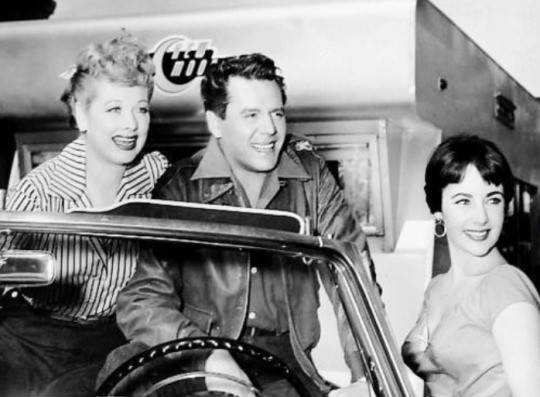
Elizabeth Rosemond Taylor was born on February 27, 1932, in Hampstead Garden Suburb, London. She received dual British-American citizenship at birth, as her parents were United States citizens. The family lived in London during Taylor's childhood. In early 1939, the Taylors returned to the United States due to fear of impending war in Europe.
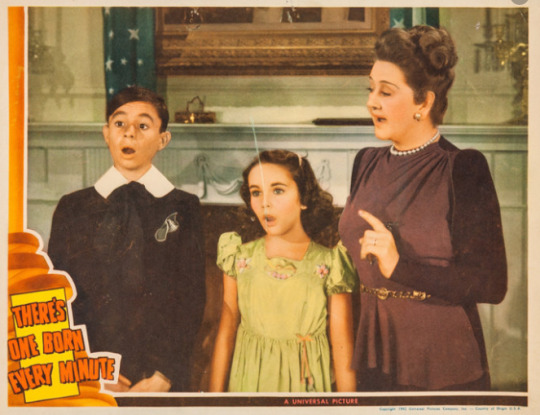
In California, Taylor's mother (a former stage actress) was frequently told that her daughter should audition for films. She made her screen debut in There’s One Born Every Minute (1942). She was ten years old. Two years later she played the leading role in National Velvet. This launched a meteoric film career that won her two Oscars (1961 and 1967).
Lucille Ball first met Elizabeth Taylor in an arranged ‘set visit’ during the shooting of 1953′s The Long, Long Trailer. After that, they appeared twice on the same television shows, but did not share screen time.
“’A Star Is Born’ World Premiere” (1954) ~ a live television broadcast of the red carpet interviews before film’s world premiere.
“Sunday Showcase: A Tribute to Eleanor Roosevelt on Her Diamond Jubilee” (1959)
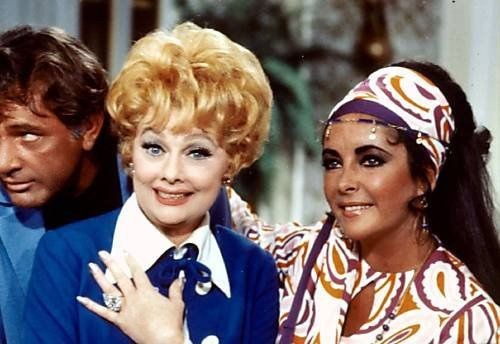
Although she started appearing on television in the early 1950s, her scripted TV debut came in 1970 when Lucille Ball invited her to appear (along with her priceless engagement ring and her actor husband, Richard Burton) on a very special episode of “Here’s Lucy” titled “Lucy Meets the Burtons” (HL S3;E1).
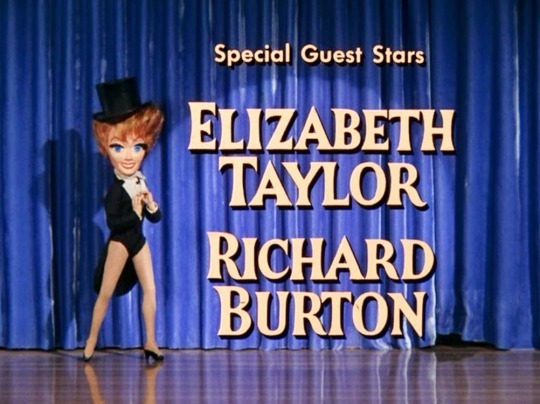
For this show, a special Guest Star credit was created. Liz got top billing! Although this episode kicked off the third season, it was filmed much later and moved up as the season premiere airing on September 14, 1970.
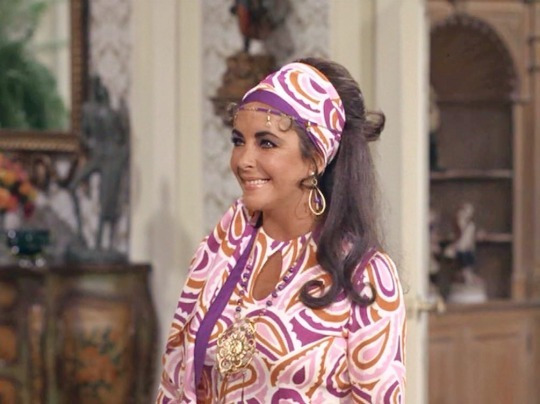
It ultimately became CBS’s highest rated show on the air for the 1971-72 television season. It was also the best remembered episode of the entire series.
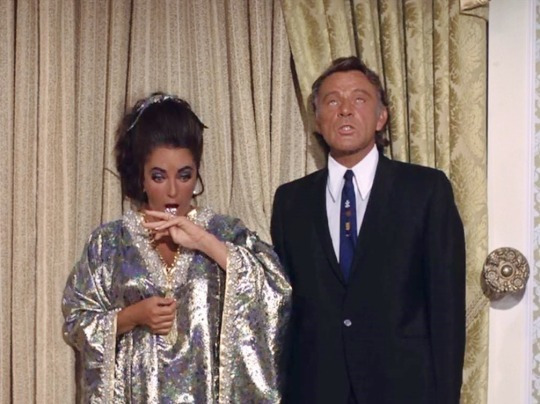
This show’s plot was built around the real-life publicity achieved when Richard Burton bought his wife Elizabeth Taylor a 68 carat Cartier diamond ring worth over a million dollars. Property Master Ken Westcott created two replica rings for the medium and long shots which were crafted from chandelier crystals. Although he wanted to keep one after the shoot, Ball took one and Taylor took the other.
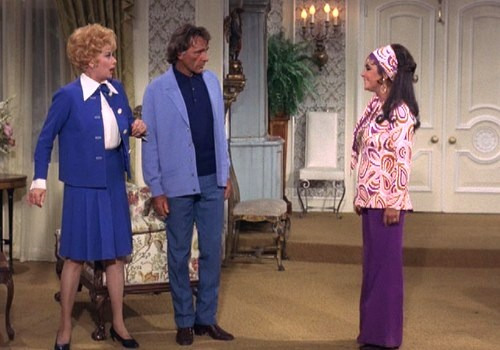
A thirty minute documentary film “Lucy Meets the Burtons: A Comedic Gem” was included on DVD release of “Here’s Lucy” season 3. It includes interviews with Lucie Arnaz, Carole Cook, and behind the scenes footage.
Although this was their first and last time acting together, Taylor and Ball appeared on several television specials together, although they usually did not share screen time.
“Dinah!” (1977) ~ Dinah Shore interviews the First Ladies of Entertainment. Taylor is interviewed via remote telephone connection.
“Happy Birthday, Bob” (1978) ~ 75th birthday salute to Bob Hope at the Kennedy Center in Washington D.C. Taylor talks about the previous evening’s reception featuring President Jimmy Carter and reads a message from Prince Philip, The Duke of Edinburgh. Taylor talks about Hope’s contributions to the USO.
“General Electric's All-Star Anniversary” (1978)
“Women I Love: Beautiful But Funny” (1982) ~ Bob Hope takes a look back at the beautiful and funny women he has worked with over the years.
“Bob Hope's Unrehearsed Antics of the Stars” (1984)
“Bob Hope's High-Flying Birthday” (1987)
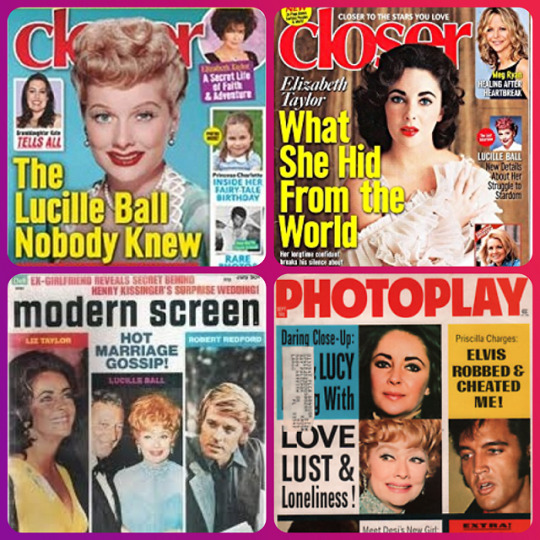
Elizabeth Taylor’s personal life was no less dramatic than her on screen roles. She was married eight times to seven men, marrying Richard Burton twice.
Larry Fortensky (1991-1996)
John Warner (1976-1982)
Richard Burton (1975-1976)
Richard Burton (1964-1974) 1 child
Eddie Fisher (1959-1964)
Mike Todd (1957-1958, his death) 1 child
Michael Wilding (1952-1957) 2 children
Conrad Hilton (1950-1951)
Taylor’s later years were spent doing philanthropic work, concentrating on AIDS and LGBTQ rights. Following her conversion to Judaism, Taylor became an active supporter of Jewish and Zionist causes.
In 2000, Taylor was designated a dame, the female equivalent of knight, on the queen's coveted New Year's list of titles and awards.
"Well, I've always been a 'broad.' Now it's a great honor to be a dame!"
Dame Elizabeth Taylor died on March 23, 2011 of congestive heart failure at age 79.
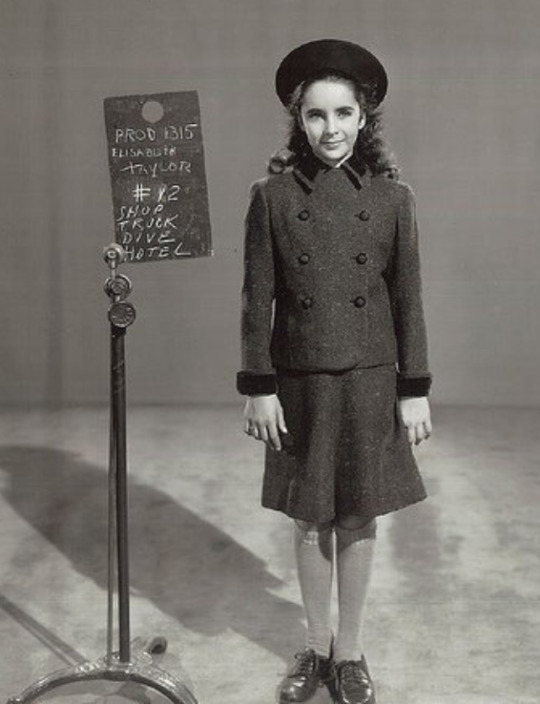
TAYLOR MADE!
Although she may not have appeared, Elizabeth Taylor’s name was mentioned on Lucille Ball’s sitcoms many times.
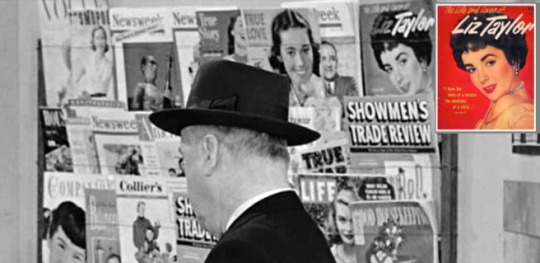
In “Lucy is Matchmaker” (ILL S2;E27 ~ May 25, 1953) Elizabeth Taylor’s name is not mentioned, but her face is quickly seen on camera on the cover of a magazine in a newsstand!

Although her name is never stated, Elizabeth Taylor was clearly one of the influences when Lucy donned “The Black Wig” (ILL S3;E26 ~ April 19, 1954). Taylor sported short dark hair throughout much of the 1950s, including in her latest film at the time, The Girl Who Had Everything. Instead, Lucy gives Italian actresses like Gina Lollobridgida and Anna Magnani the credit.

In “Ricky’s Movie Offer” (ILL S4;E6 – November 8, 1954) Lucy and Ethel accidentally knock out talent scout Ben Benjamin. Lucy revives him and tries to act casual, as if in mid-conversation. “Do you mean to tell me that Elizabeth Taylor looks just as pretty off screen as she does on?”
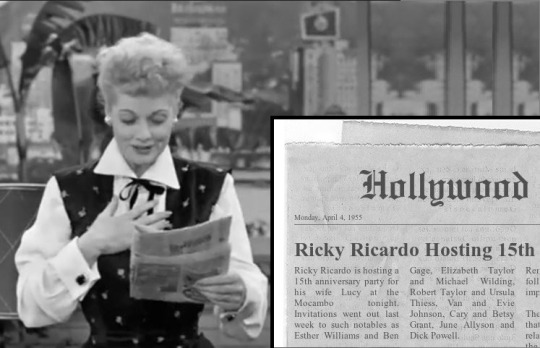
In “Hollywood Anniversary” (ILL S4;E24 ~ April 4, 1955) the list of celebrity guests supposedly coming to Lucy’s anniversary party includes Elizabeth Taylor and Michael Wilding, her second husband.

Incredibly (or perhaps legally), Liz Taylor’s name IS NOT explicitly mentioned in “Lucy Plays Cleopatra” (TLS S2;E1 ~ September 30, 1963) although the premise was clearly influenced by the smash hit film that came out that same year starring Taylor as Cleo. She was the third to play the Egyptian queen on film, after Theda Bara (1917) and Claudette Colbert (1934).
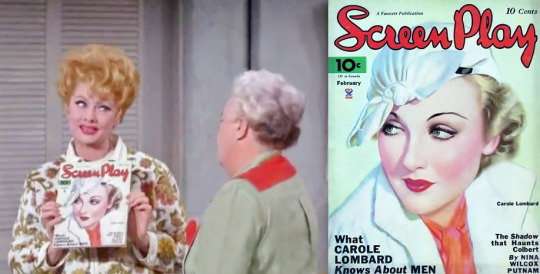
In “Lucy Goes to a Hollywood Premiere” (TLS S4;E20 ~ February 7, 1966) one of Lucy’s rare movie magazines has a (fictional) article titled “Marriage is Not for Me” (supposedly) written by Elizabeth Taylor when she was 12 years old! By that time, Taylor’s love life was fodder for Hollywood gossip mongers and tabloids.
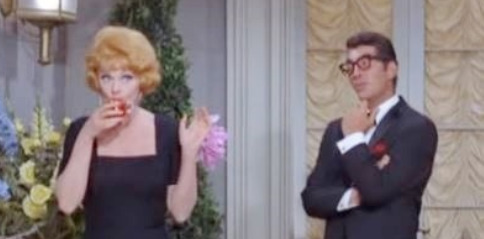
In “Lucy Dates Dean Martin” (TLS S4;E21 ~ February 14, 1966) Eddie Feldman (Dean Martin) says that while Lucy is attractive, she is no Liz Taylor. Or Gina Lollobrigida. Or Brigitte Bardot.
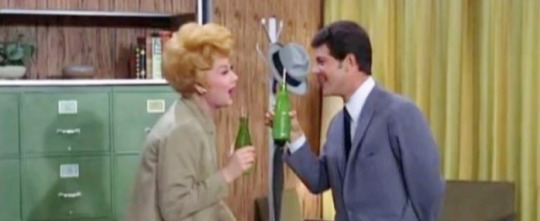
In “Lucy and the Starmaker” (TLS S6;E4 ~ October 2, 1967), after singing for Lucy, Tommy (Frankie Avalon) says he never thought he had more than an average voice. Lucy replies “if that is an average voice Elizabeth Taylor is an average housewife.”
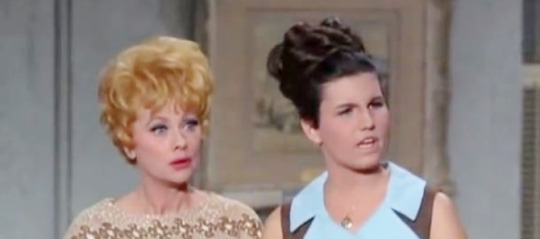
In “Lucy and Robert Goulet” (TLS S6;E8 ~ October 30, 1967) Lucy Carmichael says she once entered an Elizabeth Taylor look-alike contest and never even heard from them!
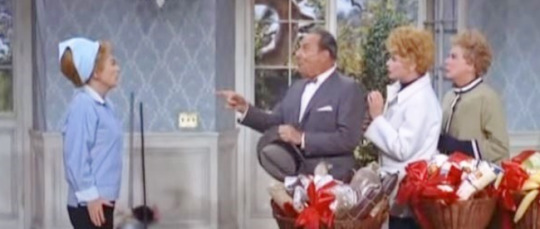
In “Lucy and the Lost Star” (TLS S6;E22 ~ February 26, 1968) starring Joan Crawford, Lucy says that “Mr. Mooney wouldn’t lend a dime to Richard Burton even if he left Elizabeth Taylor as collateral.”

In “A Date For Lucy” (HL S1;E19 ~ February 10, 1969) Lucy and Mary Jane fantasize about dream dates for an upcoming soiree. They mention Richard Burton, but add that Elizabeth Taylor wouldn’t approve.
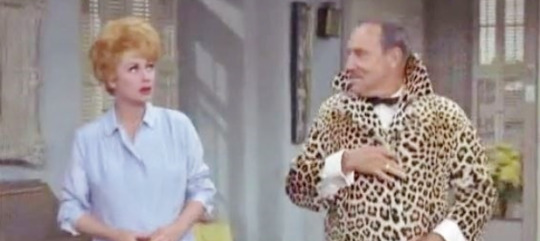
In “Lucy the Stunt Man” (TLS S4;E5 ~ October 18, 1965), Mr. Mooney jokingly says that he’s testing for the male lead in Liz Taylor’s next picture!
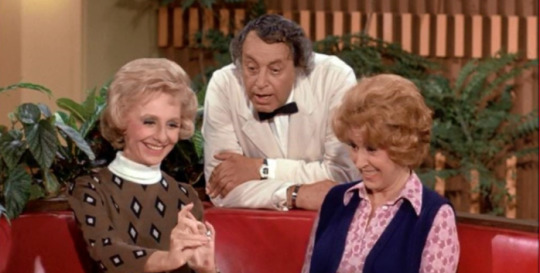
In “Lcuy Goes on Her Last Blind Date” (HL S5;E16 ~ January 8, 1973), when Vanda is trying on the engagement ring Ben gave Lucy, she says “Liz Taylor, eat your heart out.”
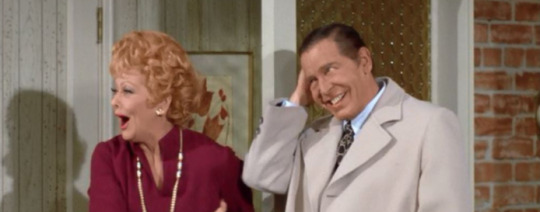
In “Milton Berle is the Life of the Party” (HL S6;E19 ~ February 11, 1974) Elizabeth Taylor is just one of the more than 15 celebrity names mentioned!
#Elizabeth Taylor#Lucille Ball#Here's Lucy#The Lucy Show#I Love Lucy#Richard Burton#TV#Film#Cleopatra#Liz Taylor
40 notes
·
View notes
Text
debunking the boys
there’s a few men that come through and “interfere” with swiftgron. since i generally believe both of the girls are bi (mostly...sometimes i do get on my lesbian dianna shit) debunking the men they “dated” while swiftgron was a thing, i suppose, is a worthwhile enough exercise as anything i do here.
taylor is easy enough she was only linked to two guys during swiftgron:
1. harry
i am fully of the opinion that harry was dating nick grimshaw (sorry to my larry oomfs) during swiftgron/haylor due to tea i’ve heard from someone who works in the uk music industry as well as the very clear gryles timeline laid out here
haylor in general is a mess beyond just gryles.
taylor tried to pin ikywt on him even though she wrote it months before she met him.
she also very weirdly had “a friend” (so her publicist) fill in the gaps in their timeline because haylor was such a mess and people didn’t understand why she was publicly dragging this teenager so badly after they “broke up”, in which she claimed he pursued her for a year before she gave him a chance in spring of 2012, which ofc negates her own narrative that they only met at the kid’s choice awards in spring 2012.
she also claims he then pursued her all through the summer of 2012. meanwhile, over in reality, harry was spotted leaving nick’s apartment in the morning about 50 times and not only that, the press was shipping him with every woman he met that summer here, here, and here (i think these were either attempts to cover up gryles or he wasn’t exclusive with nick while on tour but either way the one thing he wasn’t doing was pursuing taylor)
harry’s publicist actually denied that he chased after her at all 😭
meanwhile dianna showed up on about 90% of haylor’s dates you know just normal bff shit.
2. conor
i don’t get that pressed over conor because i believe swiftgron was on an official break while dianna went to france to film the family due to the timing of taylor writing This Love (in october a couple weeks after taylor and dianna reunited in paris in early october)
conor is not considered an important muse and taylor herself seems to almost want to let us know that by sneaking the i into the “hyiannis port” into the ehc liner note and lazily pinning museship to a song she wrote and recorded before she had even met him
but if you want conor debunked it’s easy enough - his older cousin joe kennedy iii was running for congress in massachusetts in 2012 and i think it’s fair to at least consider that they had taylor date a kennedy to up name recognition amongst a younger crowd that wasn’t as explicitly aware of the kennedy name as the average older voter. meanwhile taylor got a proper (green-eyed) muse for red.
taylor writing everything has changed in may 2012, months before she met conor, while he was 17 should certainly raise everyone’s eyebrows.
on to dianna:
1. sebastian stan
dianna supposedly dated sebastian stan from late summer 2011 to february 2012. he doesn’t actually interfere with swiftgron since i believe they got together officially at the end of february, but he’s easy enough to find a pr motive for. i’ve heard tea from industry folks that he was indeed just a pr set up that was implemented to give seb a popularity boost with a teeny bopper audience as he had a minor role on gossip girl which was the same vibe as glee in terms of a teenaged fanbase.
more importantly dianna needed a boyfriend and fast after she basically outed herself by wearing a shirt that said ‘likes girls’ on the glee live tour in june 2011. all around a good example of a fake romance to elevate the profiles of the participants and cover up someone’s sexuality.
2. henry joost
as far as we know henry and dianna went on two dates. one before the 2012 glaad awards and one right after it. given that dianna was hosting it makes sense that they would want to have her linked with a guy since her name would be making all sorts of headlines linked to gay shit.
indeed all the articles that came out about the glaad awards and her hosting them mentioned that’d she’d recently been spotted with him!
she and henry purposely lined up outside the venue when they attended a concert together with other fans and dianna signed autographs making certain they were spotted when they easily could have afforded private accomodations at the show.
3. christian cooke
dianna and christian supposedly dated from fall 2012 - spring 2013. they were spotted together four or five times. christian is another small time actor and he seems gay but who knows about all that.
what i do know is that he played gay in a film that came out late summer 2012 and he seemed anxious to nohomo the whole thing when he gave interviews about the matter.
it’s fair to assume he may have wanted a public girlfriend to negate any resulting gay rumors that cropped up from his performance. he hasn’t really had any other public girlfriends since dianna (nor did he have one before). since dianna was still involved with taylor in my opinion, which she of course had every reason to hide, it’s also fair to say she would have mutually benefitted from a promance with christian.
furthermore, dianna and christian were both reportedly in talks to be in 50 shades opposite one another so a promance would have been a great way to up their chances of being cast
and there you have it!
if you ever fretted about the boys (which let’s be honest - we don’t do that here at this blog) here’s your post!
next time i make updates the @swiftgronmasterpost i’ll be properly fleshing out these debunks if they’re not already in there 🥰😌
40 notes
·
View notes
Text
Examining the history of queer comics in the US
As previously mentioned, I am interested in creating graphic novels or comics during my practice as an illustrator. As a Nigerian, I also wish to include Nigerian elements in my comics and social commentary about the state of my home country. I want to comment on the injustices being faced by minority groups in tasteful ways in both metaphorical - like some of my favorite superhero comics- and literal as comic journalism. A particular social injustice I am interested in that the Nigerian government seems unwilling to budge on is its treatment of LGBTQIA+ people.
Considering the laws set in place against LGBTQIA people in Nigeria, a graphic novel about the situation will be controversial. I am intrigued to research how entertainment media (specifically, comics) navigated representing queer issues and topics in other countries that previously had unfavorable laws and attitudes towards queer people but have changed over time
The focus for this post will be the United States of America with a look at the correlation between the developments in the representation of queerness in comics and other mass media and the change in the country’s attitudes towards queer people.
In 1954, major U.S. publishers formed the Comics Magazine Association of America and its censorship arm, the Comics Code Authority (CCA 1954). This has been said to be in response to concerns over the explicit violence and sexual themes in depictions of superheroes (Bramlett, Cook and Meskin, 2016). The sexual themes that seemed queer in these comics were largely sub-textual and highlight the prejudice and paranoia against queer possibilities like what the Nigerian government currently emulates. This act of censorship brought to a halt any subtle references to gender nonconformity and same-sex attraction in mainstream comics.
Because of the restrictions in mainstream publishing, queer comic strips started to appear in underground comics and adult magazines in the 1960s. Chute (2008) talks about the rise of underground comics during this period as a reaction to the censorious content code that debilitated the mainstream industry and describes them as an influential cultural vehicle, challenging and arresting because they meditated on the violation of taboo. According to Murphy (2014), the world’s first gay comic strip was arguably Harry Chess: That Man from A.U.N.T.I.E., (Fig. 01) published from 1965 to ’66. However, other scholars like McGurk (2018), have pointed out earlier presences of queer comics - even though subliminal- like Lucy and Sophie Say Goodbye (Fig. 02) which was published weekly in newspapers in 1905, written and drawn by an unidentified artist. In the same decade as Harry Chess, Tuoko Laaksonen illustrated and released another popular gay comic series titled 'Kake', under the pseudonym, Tom of Finland.
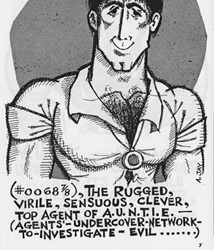
(Fig 01) Harry Chess That Man from A.U.N.T.I.E. https://glreview.org/article/the-lives-and-times-of-harry-chess/
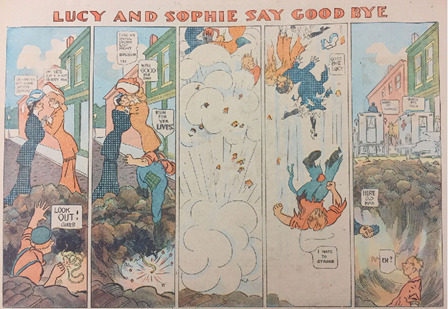
(Fig. 02) Lucy and Sophie Say Goodbye, May 21, 1905. Chicago Tribune.
Unlike Lucy and Sophie Say Goodbye, which could be interpreted as an exaggerated parody of women's social behavior, Harry Chess and Kake were inherently sexual and left little for subtext. Murphy (2014) describes the publication of Harry Chess as a key shift in gay publications and gay politics, and Ajuan Mance in The Routledge Companion to books noted that the explicit sex in strips of the two comics “created both a space and a demand for broader portrayals of gay men’s lives”. (Bramlett, Cook and Meskin, 2016).
To provide context for where the United States was in laws concerning queer rights in the ’60s, Illinois had just become the first U.S. state to decriminalize homosexuality by repealing its sodomy laws, and several milestone protests including the Stonewall Riot occurred during the decade The Supreme Court had also ruled in favor of an LGBT magazine when a suit was filed against them after the U.S. Postal Service and FBI declared the magazine obscene material. (Milestones in the American Gay Rights Movement | American Experience | PBS, 2021). There had been little progress in legal rights compared to the country’s present status, but queer Americans were visibly fighting for them.
The late 1970s and early 1980s saw the next wave of queer comics like Wendel, It’s a Gay Life, Leonard and Larry, Poppers and Chelsea Boys, which were all published in gay magazines. These comics reflected their primarily gay male readership in that the characters “attended gay pride celebrations, shopped at LGBTQ bookstores, and responded to the AIDS crisis, the Defense of Marriage Act (DOMA), and Don’t Ask/Don’t Tell, all while falling in and out of love.” (Bramlett, Cook and Meskin, 2016).
It was not until about 28 years later in Marvel’s Captain America Vol. 1 #270 (1982) that either of the large mainstream comics publishers (Marvel and DC) featured a story-line depicting queer or trans characters (Bramlett, Cook and Meskin, 2016). In this issue, Captain America helps his childhood best friend, Arnie, by rescuing Arnie’s close friend, Michael. Through subtext, it seemed to become clear to Captain America that Arnie and Michael were, in fact, a couple. (https://marvel.fandom.com/wiki/Captain_America_Vol_1_270).
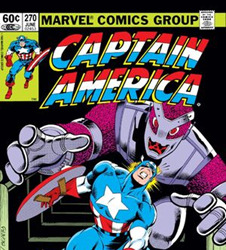
(Fig. 03) Cover of Marvel’s Captain America Vol. 1 #270 (1982)(https://marvel.fandom.com/wiki/Captain_America_Vol_1_270).
Throughout the 1980s, more queer characters were depicted, although indirectly and still with subtext like Captain America’s Arnie. The CCA, in response to the greater inclusion of LGBTQ characters and themes in the film and other popular media forms, revised its Code to lift its prohibitions against queer characters and content. CCA-approved comics however were to avoid the graphic depiction of “sexual activity” and that depictions of adult relationships, “be presented with good taste, sensitivity, and in a manner, which will be acceptable by a mass audience” (CCA 1989).
Over the years to date, DC and Marvel have introduced characters explicitly stating their orientation, including Northstar, an X-Men character; members of The Runaways and the Young Avengers; and notably Batwoman, who came out as a lesbian. The popular Archie Comics in 2010 introduced a gay character named Kevin Keller (Fig. 04) who eventually had his spinoff comic in 2012. Ajuan Mance noted the debut of Kevin Keller as queer attracted a higher level of attention than any Marvel or DC character (Bramlett, Cook and Meskin, 2016). In 2014, Kelvin Keller got married to his spouse in the Life with Archie series (Fig. 05) a few years after New York and other US states legalized same-sex marriage and a year before the Supreme Court declared same-sex marriage legal.
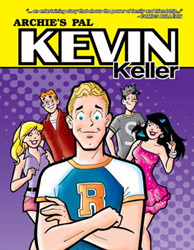
(Fig. 04) https://www.goodreads.com/book/show/11661956-kevin-keller
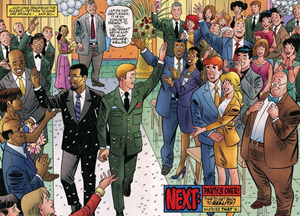
(Fig. 05) https://womenwriteaboutcomics.com/2019/06/the-wedding-issue-pride-edition-kevin-keller-and-clay-walker/
Taking this study for use in the Nigerian context can be applied in different ways. In the US, when the laws were restrictive and limiting towards queer content, the creators of comics and graphic novels under mainstream publishers had to operate in line with the laws. The creators could merely represent queer people through subtext. Unambiguous representation was only viewed through underground magazines from the ’60s up to the ’80s. In today’s age, Nigeria still has comparable, if not more regressive laws, but the Internet provides a similar and arguably better platform than the 20th century underground comics did.
The ease of access and ability to self-publish can cut out the publishing middleman, and I can illustrate distribute the stories I want via the Internet and social media platforms. Of course, if I am fortunate to secure a publishing deal for other ideas I have, I can employ subtext to include queer elements.
I will carry out more research on the best ways to present these proposed comics. Do I go in the explicit and sexually charged direction like Harry Chess and Kake to show a boldness and an unapologetic display of Nigerian queerness? Do I go the route of illustrating average Nigerian queer people to reflect their humanity hopefully to convince prejudiced people that queerness is not an abnormality? Or do I represent queerness in my comics for the Nigerian queer people to identify themselves in the media? These questions relate to the audience I want to reach because they will inform the content I want to create.
References
Bramlett, F., Cook, R. and Meskin, A., 2016, The Routledge Companion To Comics, Taylor & Francis Group.
Chute, H. 2008, "Comics as Literature? Reading Graphic Narrative", PMLA : Publications of the Modern Language Association of America, vol. 123, no. 2, pp. 452-465.
McGurk, C., 2018, Lovers, enemies, and friends: The complex and coded early history of lesbian comic strip characters, Journal of Lesbian Studies, 22:4, 336-353, DOI: 10.1080/10894160.2018.1449502
Murphy, M., 2014, The Lives and Times of Harry Chess, The Gay & Lesbian Review , 21(2): 22– 24.
Pbs.org. 2021. Milestones In The American Gay Rights Movement | American Experience | PBS. [online] Available at: <https://www.pbs.org/wgbh/americanexperience/features/stonewall-milestones-american-gay-rights-movement/> [Accessed 12 January 2021].
25 notes
·
View notes
Text
Revisiting The 1994 Miniseries of Stephen King’s The Stand
https://ift.tt/3gRQax7
This article contains spoilers for the 1994 miniseries The Stand and likely the 2020 series by extension.
The Stand is considered by many, to this day, to be one of Stephen King’s three or four finest novels. It is certainly among his most beloved by longtime readers, because of its sheer size (more than 800 pages when originally published in 1978, more than 1,000 in the unexpurgated version released in 1990) and the scope and breadth of its storytelling. A hybrid of horror, apocalyptic sci-fi and epic fantasy (King has said he explicitly wanted to create a sort of modern day The Lord of the Rings), it’s an eerie, surreal tale of the fall of civilization and the battle for the souls of those left alive in the aftermath.
A motion picture adaptation was first announced on the back cover of the paperback version of the book (with George A. Romero directing), but to many, a miniseries seemed like the only way to adapt The Stand due to its sheer size. King was against the idea for a long time, famously saying, “You can’t have the end of the world brought to you by Charmin toilet tissue.” But King’s thinking eventually changed, and in 1992 ABC — which had scored a tremendous hit with a two-part, four-hour adaptation of King’s It two years earlier — gave The Stand the green light.
King, an executive producer on the project, wanted Mick Garris to direct it after the two had hit it off on the set of Sleepwalkers, a movie based on an original King screenplay. Unlike It and a second ABC/King miniseries, 1993’s The Tommyknockers — both of which had been four hours — The Stand was developed as a four-night, eight-hour event, containing a little over six hours of content after commercials. Budgeted at $26 million, featuring more than 125 speaking parts, and shot over six months in Utah, Las Vegas and other locations, The Stand premiered on ABC from May 8 – 11, 1994.
The Stand begins with the spread of a military-created bioweapon that becomes known as the superflu or Captain Trips after it escapes from a high-security lab. The flu’s 99% mortality rate ensures that human civilization is all but wiped out, although the remaining 1% is completely immune for reasons unexplained.
As the survivors in the U.S. struggle to stay alive in a post-apocalyptic wasteland filled with tens of millions of rotting corpses, they are plagued by mysterious dreams that draw them to one of two places. Some head for Boulder, Colorado, where it seems as if decent, “good” people are gathering around an elderly Black woman named Mother Abigail who claims to speak for God, while others of a less kind bent congregate in Las Vegas under the rule of Randall Flagg, a “dark man” with supernatural powers who is a powerful demon in human form.
As the two groups assemble, it becomes clear that a confrontation is shaping up, with four of the Boulder Free Zone’s leaders — and four of our main characters — eventually heading to Las Vegas where they will make their “stand” against Flagg.
Even with six hours to fill, King and Garris had to do quite a bit of condensing to fit The Stand into its format. Nevertheless, just about all the major plot points and characters from the book make it into the miniseries, even if some don’t quite get the development they deserve. Yet the show moves along at a decent if unhurried pace, giving one time to invest in the story and the characters enough to care about what happens and who survives (many don’t).
Read more
TV
How The Stand TV Series Modernizes The Story
By Don Kaye
Movies
Stephen King Movie and TV Streaming Guide: Where to Watch Online
By Don Kaye
The cast is a grab-bag of faces from both the big and small screen. Gary Sinise — months away from his breakout role in Forrest Gump — is absolutely perfect as Stu Redman, the Texas blue collar everyman who is among the first to make contact with the superflu and walk away unscathed. Also quite effective are Rob Lowe as the saintly deaf mute Nick Andros, who becomes one of the leaders of the Free Zone, Ray Walston as the sarcastic sociology professor Glen Bateman, and Bill Fagerbakke as the sweet, intellectually disabled Tom Cullen.
Less impressive but improving over the course of the six hours is Adam Storke as the self-centered rock musician Larry Underwood. Larry is a crucial character in The Stand: it’s his ability to evolve from a selfish narcissist to a leader willing to sacrifice himself that is key to the triumph of good over evil. Storke has his moments and Larry does blossom in the latter stages of the story, but he doesn’t pull off the character’s transformation as effectively as one might have hoped.
More compelling are Laura San Giacomo as Nadine Cross (a character who, in the show, is a hybrid of the book’s Nadine and Larry’s doomed traveling companion Rita Blakemoor) and Corin Nemec as Harold Lauder. The former has promised herself to Flagg, while the latter is an incel on steroids; together they plot a terrorist attack to kill the Free Zone’s leaders before skipping town for Vegas. They too are doomed, but their collision course with each other and their fate is decidedly repulsive.
Of the major “good” characters, it’s sad to say that Molly Ringwald just doesn’t pull her weight as Frannie Goldsmith, the pregnant young woman who is the object of Harold’s desire but whom ultimately falls in love with Stu. Ringwald comes across as naïve and whiny, and her acting here is a pale shadow of her glory years in movies like Sixteen Candles and Pretty in Pink. More effective, excellent in fact, is Miguel Ferrer as Lloyd Henreid, the small-time crook and killer who becomes the take-charge right hand man to Flagg in Las Vegas, and an over-the-top Matt Frewer as the Trashcan Man, a pyromaniac who Flagg entrusts with finding weapons left out in the Nevada desert by the government.
Which brings us to Flagg and his opposite, Mother Abigail. Flagg, a recurring embodiment of evil and treachery in many King novels and stories, was reportedly the hardest role to cast. Although King and Garris initially wanted a Hollywood star, they went with the lesser known Jamey Sheridan, who brings a kind of manic glee to the role even if his heavy metal wig is questionable. Ruby Dee was practically born to play Mother Abigail (she even told Fangoria magazine that “her whole life had been research” for the part), and while the character as originally written suffers from King’s tendency to create “magical Negros” for his stories, Dee still brings poignancy and dignity to the role.
ABC
If we’ve spent a lot of time on the casting, that’s because The Stand really does live or die — and in this case it’s the former — on the strength of the characters and their relationships. Even if some of the acting is more on a typical TV level (or even below), Garris and King and their cast succeed in making you care about what happens to these people as they first survive the plague and then summon the fortitude to not just restart civilization but face an ultimate evil before they can barely catch a breath.
But Garris brings plenty of other effective touches to the show, starting with the panoramic vistas that he shoots to emphasize just how empty the world has become. The show does have an epic sweep to a lot of it, even with the restrictions of TV back in 1994, and W.G. Snuffy Walden’s (who is best known for scoring The West Wing) spare, evocative score goes a long way toward setting the melancholic yet ominous tone that Garris evokes through most of The Stand’s six hours.
There are also some truly memorable setpieces, starting with the opening tracking shot of corpses strewn all over the underground military lab to the tune of Blue Oyster Cult’s “(Don’t Fear) the Reaper.” Stu’s harrowing escape from the lab in which he is kept is pretty terrifying stuff for 1990s television, and while we wish Larry’s walk through a Lincoln Tunnel stuffed with dead cars and bodies lasted a bit longer, it still packs somewhat of a punch. Although Mother Abigail’s home is clearly a set on a soundstage, the moment in which she looks back at it as she leaves for Boulder, knowing she’ll never see it again, is quietly moving, as is the moment when Larry, Glen and Ralph Brentner (Peter Van Norden) have to leave an injured Stu behind on their long walk to Vegas.
The climax, the “stand” of the title, is problematic, but that’s possibly because it’s always been a hotly debated moment in the novel as well. Stu, Larry, Glen and Ralph are instructed by a dying Mother Abigail to walk to Vegas and confront Flagg. As we mentioned, only Larry, Glen and Ralph make it; Glen is shot to death by Lloyd Henreid in his cell, while Larry and Ralph are to be publicly executed by dismemberment, in front of the entire population of Vegas, on Flagg’s orders.
Just as the execution is getting underway, a radiation-sick Trashcan Man returns from the desert with a nuclear weapon in tow. With the men of the Free Zone having shown their worth to God by facing Flagg with courage and offering to give their lives to defeat him, the Almighty takes over from there. He turns a little ball of electricity that Flagg used to fry a traitor in the crowd into a manifestation of “the hand of God,” detonating the bomb and wiping out Flagg, his minions, and our selfless heroes.
Read more
TV
Upcoming Stephen King Movies and TV Shows in Development
By Matthew Byrd and 6 others
Movies
The 21 Best Christmas Horror Movies
By Rosie Fletcher and 5 others
While many have criticized this scene in both the book and miniseries as a “deus ex machina” climax, it actually makes sense: the Free Zone heroes can only do much themselves against an immortal, powerful being like Flagg. They can weaken him, but they can’t quite destroy him. Once they’ve proven themselves, however, by standing up to Flagg and his unknowable evil with faith and courage, God finishes the job. The problem is that in the book, Larry and Ralph interpret the thing in the sky as the “hand of God.” In the miniseries, Garris made it look like an actual hand.
That adds a layer of cheesiness to what is otherwise a strong climax, as does having Mother Abigail’s disembodied, cooing head float above the crib of Frannie’s baby in the hospital during the closing moments, looking like a cutout picture of Ruby Dee’s face slapped on the glass window of the nursery. It’s effective and emotional to have the show close on a shot of the baby, sleeping peacefully and virus-free and metaphorically carrying the future on her tiny back, but the Abigail phantom almost ruins it.
cnx.cmd.push(function() { cnx({ playerId: "106e33c0-3911-473c-b599-b1426db57530", }).render("0270c398a82f44f49c23c16122516796"); });
For all its faults — its dated view of the American populace (even with 99% percent of the world wiped out, there are far too few people of color among the survivors), its creaky fashions, its occasionally cut-rate visual effects and its uneven acting — The Stand still holds up pretty decently. Sinise and the stronger actors do much of the heavy lifting, the story and stakes are clearly laid out, and the viewer becomes involved in the characters and their struggle. Now more than 25 years later, The Stand is being adapted again by Josh Boone (The New Mutants) and Benjamin Cavell (King’s son Owen is also a producer and writer on the project). The 10-part miniseries will debut Thursday (December 17) on CBS All Access, and in addition to a different structure for the story, the series will feature a brand new ending written by Stephen King himself. In the meantime, the original 1994 version still has heart, plenty of it, and for King and Mick Garris, it was evidently a labor of love. It may be far from perfect, but one could say it stands on its own two feet.
The post Revisiting The 1994 Miniseries of Stephen King’s The Stand appeared first on Den of Geek.
from Den of Geek https://ift.tt/3nuLY9m
2 notes
·
View notes